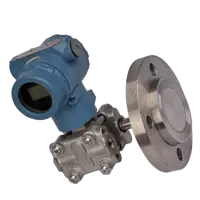Understanding High-Temperature Pressure Measurement Challenges
The Impact of Extreme Heat on Pressure Transmitters
High-temperature environments pose significant challenges for pressure measurement equipment. Extreme heat can affect the accuracy, reliability, and longevity of pressure transmitters. Electronic components may degrade faster, sensor materials can become unstable, and seals may fail prematurely. Understanding these impacts is essential for selecting transmitters that can maintain performance under harsh conditions.

Common Industries Requiring High-Temperature Pressure Measurement
Several industries rely on accurate pressure measurements in high-temperature settings. Oil and gas exploration and production often involve measuring pressures in deep wells where temperatures can exceed 200°C. Chemical processing plants frequently deal with hot, corrosive fluids. Power generation facilities, particularly in steam systems, require precise pressure monitoring at elevated temperatures. Recognizing the specific needs of these industries helps in choosing appropriate pressure transmitters.
Temperature Ranges and Their Effects on Measurement Accuracy
Different temperature ranges present varying challenges for pressure transmitters. As temperatures rise, the accuracy of measurements can be compromised due to thermal expansion, changes in material properties, and electronic drift. It's crucial to understand how different temperature ranges affect measurement accuracy and to select transmitters designed to compensate for these effects. Some advanced transmitters utilize temperature compensation algorithms to maintain accuracy across wide temperature ranges.
Key Features to Look for in High-Temperature Pressure Transmitters
Materials and Construction for Durability
When selecting pressure transmitters for high-temperature applications, the choice of materials is paramount. Look for transmitters constructed with heat-resistant alloys such as Inconel, Hastelloy, or specialized stainless steels. These materials offer superior corrosion resistance and maintain their structural integrity at extreme temperatures. The housing and internal components should be designed to withstand thermal expansion and contraction cycles without compromising seals or connections. Robust construction ensures longevity and reliable performance in challenging environments.
Advanced Sensing Technologies
Innovative sensing technologies play a crucial role in high-temperature pressure measurement. Capacitive sensors, for instance, offer excellent stability and accuracy in extreme heat. Piezoelectric sensors can provide rapid response times and high sensitivity. Some manufacturers have developed proprietary sensing elements specifically designed for high-temperature applications. These advanced technologies often incorporate temperature compensation mechanisms to maintain accuracy across wide temperature ranges. When evaluating pressure transmitters, consider the underlying sensing technology and its suitability for your specific temperature requirements.
Temperature Compensation and Calibration Features
Effective temperature compensation is essential for maintaining measurement accuracy in high-temperature environments. Look for pressure transmitters that offer sophisticated temperature compensation algorithms. These systems continuously adjust measurements based on real-time temperature data, ensuring accuracy across the entire operating range. Additionally, consider transmitters with easy calibration features. Some models allow for in-situ calibration, reducing downtime and maintenance costs. Advanced calibration capabilities, such as multi-point calibration, can significantly enhance measurement precision in variable temperature conditions.
Implementation and Maintenance Considerations
Proper Installation Techniques for High-Temperature Environments
Correct installation is crucial for the optimal performance of pressure transmitters in high-temperature settings. Consider using thermal isolation techniques, such as extended mounting flanges or impulse lines, to protect sensitive electronics from direct heat exposure. Proper sealing and gasket selection are essential to prevent leaks and maintain measurement integrity. When installing transmitters, ensure adequate ventilation or cooling if possible. In some cases, remote mounting of the transmitter's electronics separate from the sensing element can help protect against extreme temperatures. Always follow manufacturer guidelines and industry best practices for installation in high-temperature applications.
Maintenance Strategies for Longevity and Accuracy
Maintaining pressure transmitters in high-temperature environments requires a proactive approach. Develop a regular inspection schedule to check for signs of wear, corrosion, or degradation. Pay special attention to seals, gaskets, and connection points, as these are often the first to show signs of heat-related stress. Implement a calibration program to ensure ongoing accuracy, with the frequency determined by the specific application and environmental conditions. Consider using predictive maintenance techniques, such as trend analysis of transmitter performance data, to anticipate and prevent failures. Proper maintenance not only extends the life of the transmitter but also ensures consistent measurement accuracy over time.
Troubleshooting Common Issues in High-Temperature Applications
Even with the best selection and maintenance practices, issues can arise with pressure transmitters in high-temperature environments. Common problems include drift in measurements, sudden loss of accuracy, or complete failure. When troubleshooting, start by verifying that the actual operating conditions match the transmitter's specifications. Check for any physical damage or signs of overheating. Analyze historical data to identify any gradual degradation in performance. For electronic issues, consider the possibility of electromagnetic interference, which can be exacerbated in high-temperature industrial settings. Develop a systematic approach to diagnosing problems, and maintain a log of issues and resolutions to improve future selection and maintenance strategies.
Conclusion
Choosing the right pressure transmitter for high-temperature environments is a critical decision that impacts the efficiency, safety, and reliability of industrial processes. By understanding the challenges, key features, and implementation considerations discussed in this guide, you can make informed decisions that optimize your pressure measurement systems. Remember that the best choice often involves balancing performance, durability, and cost-effectiveness. As technology continues to advance, stay informed about new developments in high-temperature pressure measurement to ensure your systems remain at the cutting edge of reliability and accuracy.
Contact Us
For expert guidance on selecting and implementing high-temperature pressure transmitters tailored to your specific needs, trust CEPAI Group. Our advanced solutions offer unparalleled accuracy and durability in extreme environments. Contact us at cepai@cepai.com to discover how our innovative pressure measurement technologies can enhance your operations and drive your success.
_1746598531170.webp)



